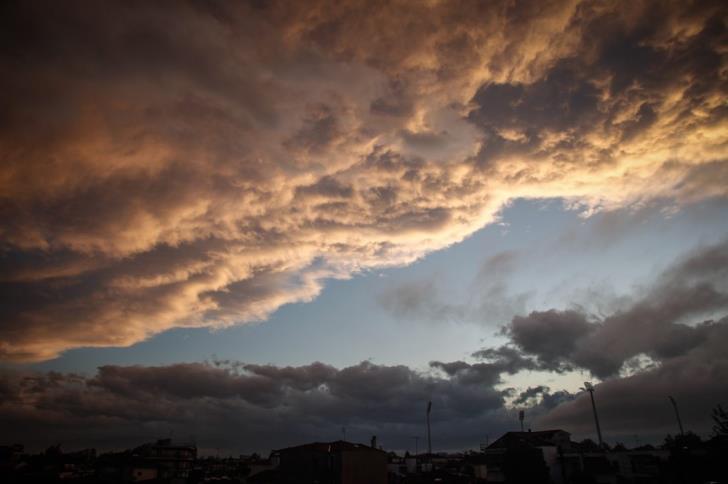
At higher intensities overall light conversion efficiency is reduced and incident light above this saturation intensity ( I S) is wasted.
#CLEAR DAY CLOUDY DAY FULL#
Rackley, in Carbon Capture and Storage (Second Edition), 2017 Light conversion efficiency and saturationĪlthough algae are able to photosynthesize under very low light levels, their ability to convert incident light saturates at a light intensity roughly equivalent to a bright overcast day (about one-tenth of full direct sunlight). It becomes obvious that much higher efficiencies and storage can be achieved through the utilization of refined or pure salt whenever possible, as this maximizes optical transmission. The optical transmission properties and related collection efficiency vary greatly depending on salt-concentration, the quantity of suspended dust or other particles, surface impurities like leaves or debris, biological material like bacteria and algae, and the type of salt.

A site where the soil is naturally impermeable, such as the base of a natural pond or lake, or can be made impermeable by compaction or other means, will allow considerably lower power costs. The liner is a factor that increases the cost of a solar pond. Disturbed water tends to lose heat faster than when calm.ĭue to the excessively high salt concentration of the LCZ, a plastic liner or impermeable soil must be used to prevent infiltration into nearby ground water or soil. This heat loss can be prevented by spreading a plastic grid over the pond's surface to prevent disturbance by the wind. The major heat loss occurs from the surface of the solar pond. The brine can be recycled, divided into water and salt (by solar distillation) and returned to the pond. This means that salt must be added to the LCZ, and fresh water to the UCZ whilst brine is removed. To maintain a solar pond in this non-equilibrium stationary state, it is necessary to replace the amount of salt that is transported by molecular diffusion from the LCZ to the UCZ. This intermediate zone provides excellent insulation for the storage layer, while simultaneously transmitting the solar radiation. This zone keeps the two convective zones apart and gives the solar pond its unique thermal performance. For given salinites and temperatures in the upper and lower convective zones, there exists a stable intermediate gradient zone. This is the layer with the highest salt concentration and where the high temperatures are built up. At the bottom of the pond there is another convecting zone, the lower convecting zone or LCZ. Adjacent to the surface there is a homogenous convective zone that serves as a buffer zone between environmental fluctuations at the surface and conductive heat transport from the layer below. The vertical configuration of a salt-gradient solar pond normally consists of three zones. BOKALDERS, in Renewable Energy Technologies, 1986 Solar Pond Technology Examples of reactions include decomposition of metal hydrides, oxides, peroxides, and ammoniated salts. An advantage of thermochemical energy storage is that the products of reaction can be stored at room temperature. The amount of energy stored depends on the heat of reaction and the extent of conversion achieved.

Thermal energy can also be stored as the heat of reaction in a reversible chemical reaction. Materials such as paraffin waxes, inorganic salts, and eutectics of organic and/or inorganic compounds are used as phase change materials. Phase change occurs at a fixed temperature called the transition temperature or over a very small temperature range. Latent heat storage takes advantage of the large amount of energy required to effect phase transformations in materials. Commonly used sensible heat storage materials include water, organic oils, molten salts, ceramics, and rocks. In sensible heat storage, the energy is used to raise the temperature of a storage medium. Thermal energy is normally stored as sensible heat, latent heat, or the heat of chemical reaction. Many solar systems incorporate thermal storage to compensate for the intermittent nature of the solar resource. Solar energy is a resource that is not available during the night and is only intermittently available on cloudy or overcast days.

Goswami, in Encyclopedia of Energy, 2004 1.3 Thermal Storage


 0 kommentar(er)
0 kommentar(er)
